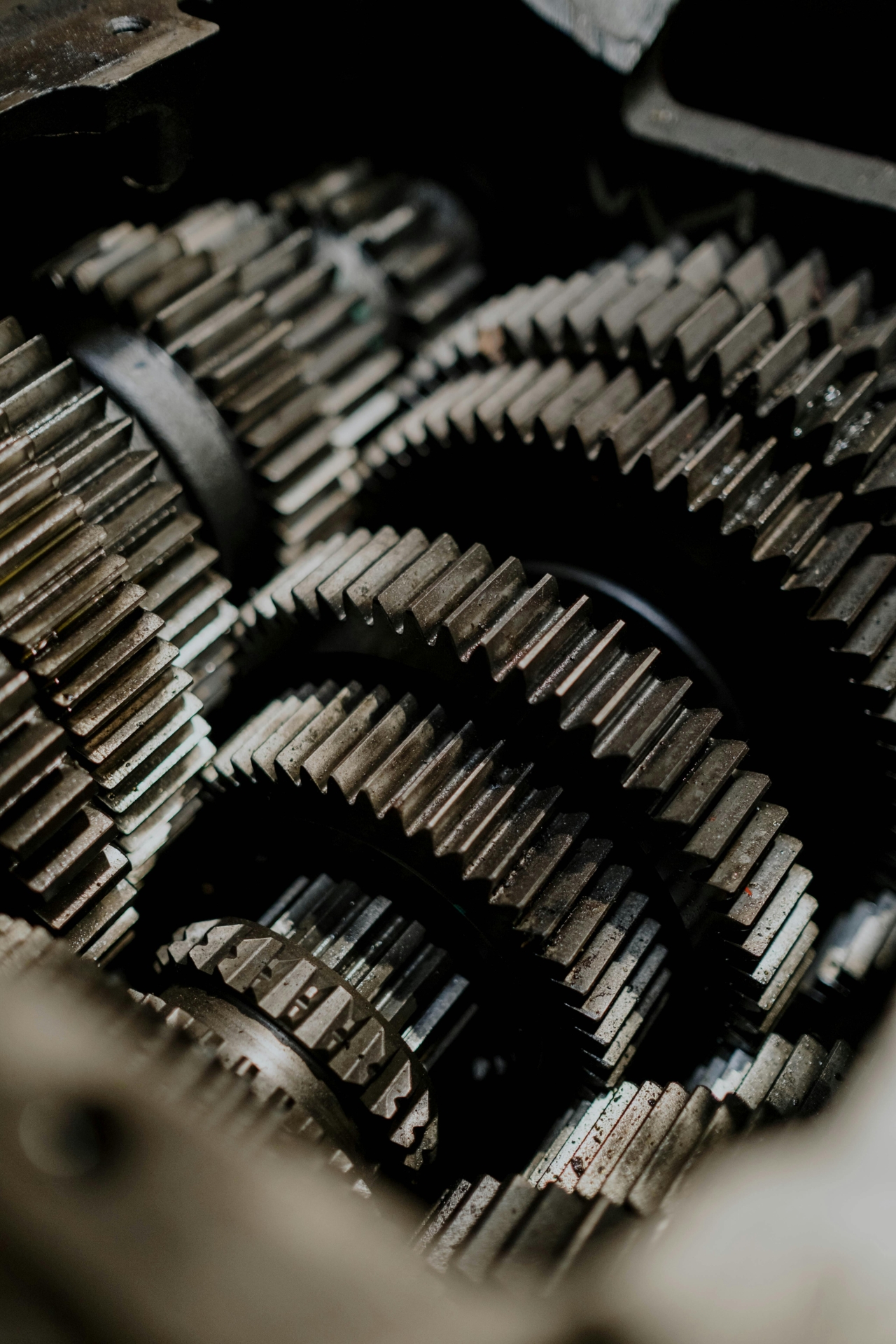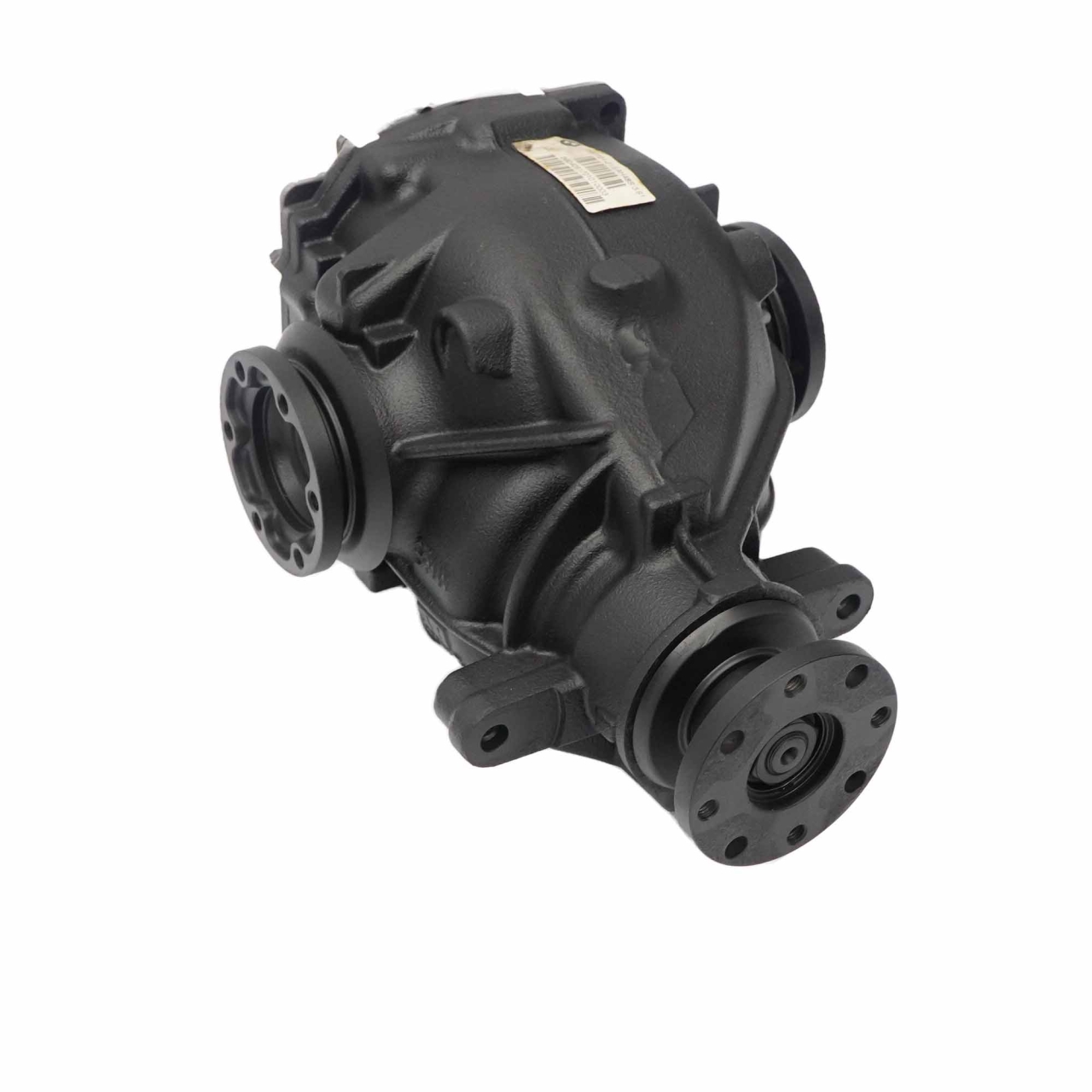The drivetrain determines whether a car starts easily or cruises at low revs. Therefore, choosing a drive axle or differential from a disassembled vehicle should be based on driving style and final drive ratio. Used car parts from the original range often prove to be a sensible choice: they fit without modifications, are readily available, and retain the factory flanges and mounting points. This guide includes definitions (what a differential and axle are), gear ratio selection practices, and examples for popular platforms (BMW, Mercedes, Audi, VW, MINI, vans). At the end, there's a quick FAQ and a concise table with frequently asked questions. The entire guide is written for real-world purchasing decisions – in the spirit of "less theory, more substance" from Global Parts.
Drive and definitions
What do we call a bridge and a differential?
When a driver says " differential ", they usually mean a differential mechanism that transfers torque from the shaft to the driveshafts, compensating for the difference in wheel speeds. The "drive axle" is a complete housing with the final drive (crown wheel & pinion), bearings, flanges, and often suspension mounts – popular in rear-wheel drive cars and delivery vans. The final drive ratio (e.g. 3.23, 3.46, 3.91) defines the relationship between the shaft speed and the wheel speed: a lower value = lower RPM on the highway, a higher value = quicker starts and better response in the city. In the world of spare parts, there are three key variants of differentials: open, limited-slip (LSD/differential – plate, helical/Torsen), and electronically assisted (e-diff via brakes).

Transmission and style
City, route, track – how to choose ratio
A short metaphor helps: the gear ratio is the "gear length" of the car. In heavy traffic and on short distances, a shorter ratio (e.g., around 3.46–3.91) is more pleasant to drive, as the engine enters its useful range more quickly. On the highway and for long distances, a longer ratio (e.g., 2.81–3.15) wins, as it reduces revs and noise. In sports cars, a compromise is popular: a limited-slip differential + a medium gear ratio, which adds traction when exiting a corner, but doesn't overdrive revs on the highway. In delivery vehicles (e.g., the Sprinter 906 rear axle, the Ford Transit rear axle ), the ratio is selected based on the weight and route – shorter for the city, longer for expressways.
Variants and logic
Open, LSD, 4×4 drives
In everyday driving, an open differential is neutral and predictable. When traction is key, an LSD comes in: a plate differential (mechanical limited slip differential) provides a firm lock, while a helical differential (Torsen) operates progressively. In 4x4 systems, the central torque distribution plays a crucial role: xDrive, quattro, 4MATIC, Haldex – each system has its own "logic" and often separate gear ratios for the front and rear differentials . For this reason, when repairing an AWD, it's common to pair the set (front + rear) or select a component based on the VIN/OEM to avoid a speed difference between the axles.
Compatibility and assembly
Flanges, axle shafts, heads, harnesses
From a mechanic's point of view, details matter: flange diameters, cross-member types, axle shaft lengths, and mounting points. In BMWs, housings commonly known as "small head" and "large head" are important (e.g., E46 differential small head vs. larger versions), which influences the selection of covers and mounts. In Mercedes (e.g., Mercedes W202, W203 differentials ), flanges and joint types are key; in Audis ( Audi A4 B6 differential ) – compatibility with quattro/Haldex; in BMW X3 E83 – compatibility with the xDrive system; in Ford Transit – the "twin" variant and tires on the axle. In drive axles ( BMW E60 axle, E46 axle, BMW E87 axle, BMW E90 axle ) and in vans ( Mercedes Sprinter axle, Ford Transit rear axle ), the axle width and caliper mounting are also important.
Symptoms and service
What does "differential bearing - symptoms" mean?
An increase in whining with speed, a buzzing sound within a certain range, and a knocking sound when load changes are typical signs of bearing fatigue or incorrect backlash. An intermittent "whirring" sound at a constant speed often indicates tapered bearing preload or worn raceways. In cars with a reduction gear or limited slip differential, the symptoms include a grinding sound during tight turns (especially with oil incompatible with LSD). Rebuilding a differential gear involves adjusting the clearances, selecting spacers, replacing bearings and oil seals, and inspecting the crown and pinion assembly.
Used and reconditioned parts
Why this is a wise choice
In many older models, new components are limited, but used or remanufactured differentials and axles from the original program remain readily available and compatible with factory specifications. An additional benefit is speed: the dismantled component has the correct flanges, points, and final drive, so installation is faster than aftermarket conversions requiring adjustments. A remanufactured differential, in turn, provides a fresh set of bearings, seals, and adjustments, increasing durability while maintaining the original geometry. This is why garages and drivers often combine used car parts with core remanufacturing – a reasonable total cost and factory fit.
Examples of platforms
– BMW: BMW E90 differential (including the BMW E90 320i differential ), BMW E46 differential / E46 differential (including the E46 "small head"), BMW E87 differential, BMW E60 differential, BMW F10 differential, BMW X3 E83 differential ; in older series – BMW E39 differential . – Mercedes: Mercedes W202 differential, Mercedes W203 differential, Mercedes W211 rear axle ; in delivery vans – Sprinter 906 axle / Mercedes Sprinter axle. – Audi: Audi A4 B6 differential; selection for quattro/Haldex and gearbox. – Ford: Ford Transit rear axle (also "twin"), Ford Transit rear axle; pay attention to gear ratios and hub types. – MINI/VW: front differential in AWD versions and axles in utility models; selection based on transmission codes. In each of these cars, it is worth choosing the gear ratio consciously: for the city (shorter), for the highway (longer) or for balance (medium, with eLSD).
Parameters and numbers
What a mechanic and consultant are looking for
The most important data in product data sheets is the final drive ratio (ratio), differential type (open/LSD), flange diameter, joint type, spacing and mounting type, and for axles – the axle width and caliper position. For AWD, the front and rear axle ratios (must match) and torque split logic are also included. In practice, automotive shops and garages work in the same language: VIN, OEM number, and installation parameters. This shortens discussions and prevents generation mix-ups.
Table – quick query and decision mapping
| User query | Category | What decides | Selection tip |
|---|---|---|---|
| BMW E90 320i differential | RWD, rear | ratio, flanges | city pace → shorter gear ratio |
| E46 "small head" differential | RWD, rear | housing, cover | pay attention to the suspension versions |
| Mercedes W203 differential | RWD/AWD | flanges, joints | consistency with the axle shafts and gearbox |
| Audi A4 B6 differential | AWD | Haldex/quattro | front-rear pair with the same ratio |
| Sprinter 906 bridge | delivery van | axle width | shorter to the city, longer on the road |
| rear axle Ford Transit | delivery van | hub type | "twin" vs single wheel |
| BMW X3 E83 differential | AWD | xDrive, gear ratio | set compatible with the front axle |
 |
Safety and assembly
When to take your car to the service
Final drive work requires precision: setting clearances, torques, and bearing preload. This is obvious for SRS components, but the stakes are similar in the drivetrain – improper backlash generates whining, while overly tight bearings overheat and shorten their service life. If the project involves a gear change or an LSD retrofit, it's best to have the installation performed by a service shop that has the necessary measurement tools and appropriate locking devices. This ensures that the car parts will work with the driveshafts, and the geometry will remain stable after installation.
Comparisons and alternatives
Open vs. LSD, shorter vs. longer
An open differential is the most neutral – great for daily commuting. LSD adds traction in corners and on exit, which dynamic drivers and those who ride in hills will appreciate. Short gear ratios add life when starting and in the city, while long ratios calm down the revs and noise in the S-Class. In commercial vehicles, matching the ratio to the weight and cruising speed has a greater impact on comfort than additional horsepower.
FAQ – frequently asked questions
| Question | Answer |
|---|---|
| What does the "final drive ratio" of a differential mean? | This is the ratio of the crown wheel teeth to the drivetrain (e.g., 3.23). The higher the ratio, the easier it is to launch and the faster the revs increase; the lower the ratio, the quieter it is on the road. |
| When does LSD/spray make sense? | When traction and stable cornering are the priorities: dynamic driving, hilly routes, light tracks. An open diff will also perform well in everyday RWD. |
| What are typical "differential bearing symptoms"? | A whine that increases with speed, a humming noise in range, or a knocking sound when changing gas/brake. These are signals that the engine needs service or replacement/regeneration. |
| Can only the rear differential be replaced in an AWD? | Depends on the design. In many cars, the front and rear axles must have the same ratio – otherwise, stress and errors will occur. |
| Are dismantled drive axles reasonable? | Yes, because they match the factory parameters. The reconditioning completes the package: new bearings, seals, and adjustments in the original geometry. |
| How to choose a bridge for a delivery van? | Consider the axle width, hub type, tires, and gear ratio for the route. For example: the Sprinter 906 – different ratios for city driving and expressways. |
| Finally, the quickest path to success is to determine your driving style, select the gear ratio and differential type, and confirm the parameters via VIN/OEM. Global Parts advisors will help you assemble drive axles, differentials, and accessories for popular brands (BMW parts, Mercedes parts, Audi parts, VW parts, MINI parts) to ensure predictable installation and a drivetrain tailored to your car's everyday needs. |



